Best Time to Travel to Krabi: Weather Guide and Travel Tips
Table of Contents
- Introduction: Best Time to Travel to Krabi
- Krabi's Three Seasons Explained
- Month-by-Month Weather Guide
- Festivals and Events in Krabi: What to Expect Throughout the Year
- Where to Stay in Krabi: Accomodation Options for Every Traveler
- Practical Weather Tips for Your Krabi Trip
- Choose Your Perfect Time to Visit Krabi
- Frequently Asked Questions (FAQ)
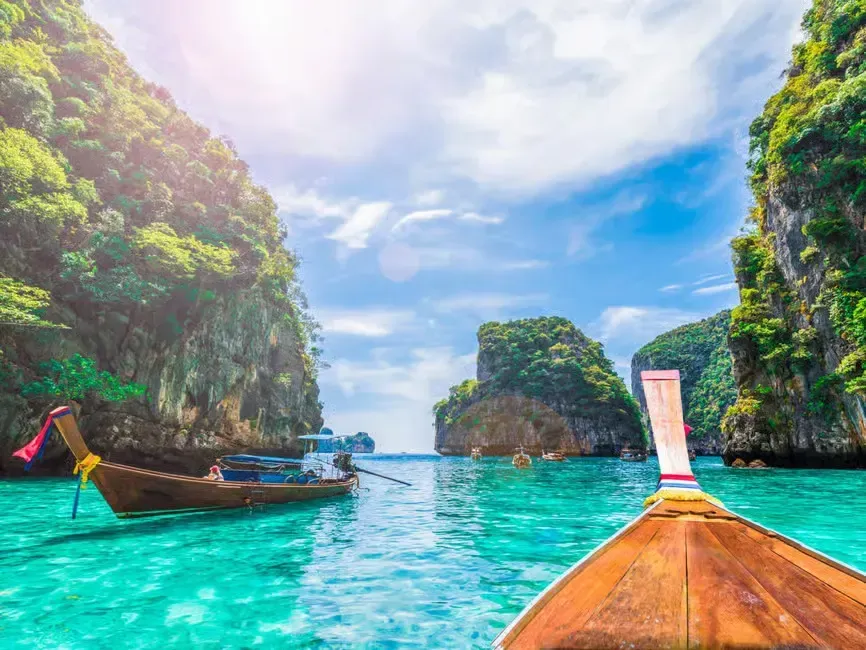
Planning a trip to Krabi? The best time to visit is when the weather is just right, the crowds aren’t overwhelming, and the prices make sense for your budget. Statistics show that between January and November 2023, Krabi welcomed over 3.4 million visitors, fueling a thriving tourism economy with an average hotel occupancy rate of nearly 68%. For most travelers, that means hitting the beaches between November and March when the skies are sunny and the sea is calm. April and May offer fewer tourists and wallet-friendly deals, but it’s hotter. From June to October, expect more rain and quiet beaches, but also some great discounts and a lush tropical vibe. Knowing this helps you pick the perfect time to enjoy all that Krabi has to offer.
Krabi’s Three Seasons Explained
Krabi’s weather follows a simple pattern divided into three main seasons: peak, shoulder, and low. Knowing what each brings can help you plan your best trip.
Peak Season (November to March)
This is the most popular time to visit Krabi for a reason. You’ll enjoy plenty of sunny days, low humidity, and calm seas—perfect for beach days and island hopping. Temperatures generally range from 25°C to 32°C (77°F to 90°F), and rainfall is minimal. Expect crowds at popular spots like Ao Nang and Railay Beach, and prices will be at their highest. Still, the dry and pleasant weather is ideal if outdoor activities and sightseeing are your priority.
Shoulder Season (April to May)
April and May mark the shoulder season, sometimes called the hot season. Temperatures can soar into the mid-30s°C (mid-90s°F), so be ready for some serious heat. Rainfall begins to increase but usually comes in short bursts. The bright side? You'll find fewer tourists, and this is when accommodation and tour prices start to drop. If you don’t mind the heat, it’s a great chance to enjoy Krabi’s beauty with less crowd and better deals.
Low Season (June to October)
The low season is Krabi’s rainy or monsoon season, with rainfall peaking in September. Temperatures stay warm, usually between 24°C to 31°C (75°F to 88°F), but rain showers are frequent, sometimes lasting all day. Don’t let this scare you off—many days have sunshine between showers, and the lush green landscape is stunning. Plus, the crowds thin out and prices drop significantly. Just be prepared for occasional rough seas, which might affect water activities.
Understanding these seasons helps you pick the months that match your weather preference, budget, and crowd tolerance.
Month-by-Month Weather Guide
If you want to get the full picture of Krabi’s weather, breaking it down month by month helps you plan exactly when to go and what to expect.
January to March
These months are part of the dry, peak season with the best weather. Daytime highs hover around 32°C to 34°C (90°F to 93°F), with nights cooling down to 22°C to 23°C (72°F to 73°F). Rain is rare, averaging fewer than 5 rainy days per month, making it ideal for island hopping, beach time, and outdoor adventures. Sea temperatures remain pleasantly warm at 28°C to 29°C (82°F to 84°F), perfect for snorkeling and diving. Keep in mind, this is when tourist crowds peak, so book in advance.
April to May
The shoulder season brings hotter days, with temperatures climbing up to 34°C to 35°C (93°F to 95°F). Humidity starts to rise and short bursts of rain become more common, especially in May when rainfall jumps to around 120-290 mm. While the heat can be intense, this off-peak period means fewer visitors and better deals on accommodations. April is known for the Songkran festival, which is a lively time to visit but does add some crowd and noise.
June to October
Welcome to the monsoon or low season. Rainfall hits its peak in September and October, with over 300 mm of rain per month and up to 20 rainy days. The weather is warm, with day temperatures around 31°C (88°F) and night temps holding steady near 24°C (75°F). Showers can be heavy but often come in bursts, leaving plenty of dry windows to explore. The landscape is lush and green, which photographers love. Pricing for hotels and tours drops significantly in this period, making it a great budget option if you don’t mind the rain.
November to December
The weather starts to clear up again in November. Rainfall decreases to around 70-180 mm, and sunshine hours increase. Temperatures are comfortable, ranging between 25°C and 31°C (77°F to 88°F) during these months. It’s a shoulder-peak transition with smaller crowds and a festive atmosphere heading into December.
Knowing these monthly averages lets you decide if you want to chase the best weather, avoid crowds, or snag the best deals during your Krabi visit.
Festivals and Events in Krabi: What to Expect Throughout the Year
Krabi isn’t just about stunning beaches and limestone cliffs—it’s also packed with lively festivals and cultural events that give you a taste of local life. Picking your travel dates around these celebrations adds a unique twist to your trip.
Songkran Water Festival (April 13-April 15)
This is Thailand's New Year, and in Krabi, it turns into a month-long party of splashing water to wash away bad luck. It’s fun, noisy, and a great way to cool off during the hot season. Traditional ceremonies also take place in temples if you want a quieter experience.
Loy Krathong Festival (November)
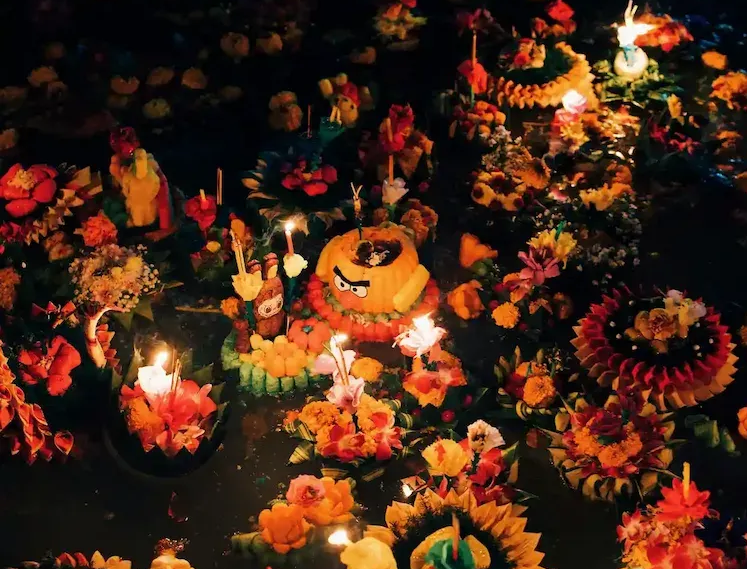
Known as the “Festival of Lights”, Loy Krathong fills Krabi’s waterways with floating lanterns. Locals gather at night to release decorated baskets on the water, symbolizing letting go of grudges and bad luck. It’s a magical sight and a peaceful celebration amid the busy season. The festival follows the Thai lunar calendar, celebrated on the evening of the full moon of the 12th lunar month, so the exact date shifts each year. In 2025, Loy Krathong falls on November 6.
Krabi Boek Fa Andaman Festival (November 16- November 18)
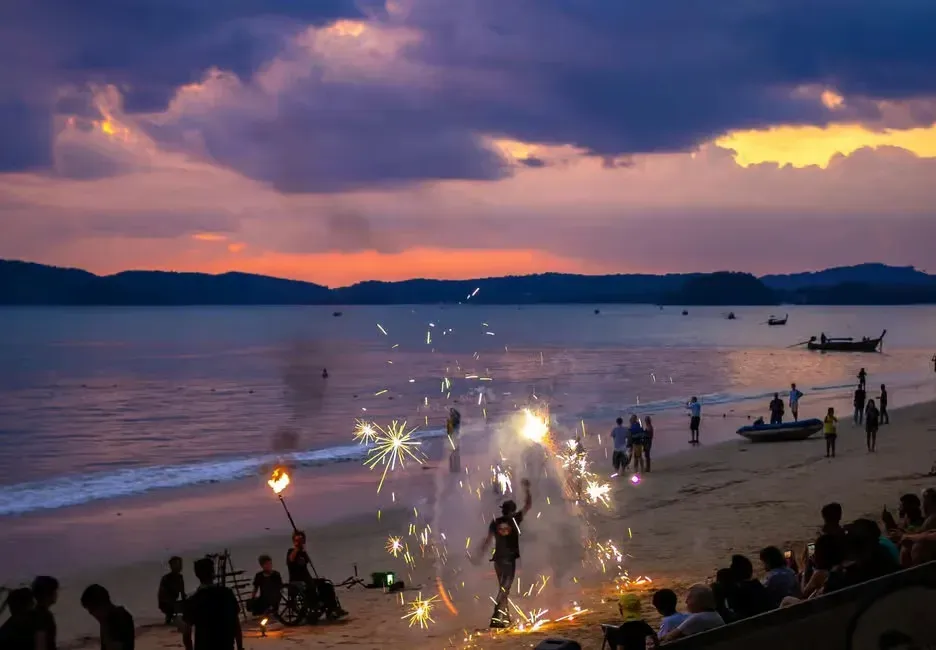
This marks the start of the tourist season with parades, boat races, and cultural performances showcasing Krabi’s diverse heritage, including Indian and Muslim influences. It’s colorful and lively, perfect if you want to mix culture with your beach time.
Chinese New Year & Sea Gypsy Floating Boat Ceremony (January/February, May and November)
Krabi’s Chinese community celebrates New Year with dragon dances, lanterns, and local dishes. The date changes each year depending on the lunar calendar; in 2026, Chinese New Year will be celebrated on February 17. The Sea Gypsy ceremony, held on full moon days, honors spirits of the sea with a boat-floating ritual for blessings and protection. This tradition is observed twice a year, coinciding with the full moons of the sixth and eleventh lunar months, which typically fall in May and November.
Beyond these, keep an eye out for local markets and night festivals that pop up year-round, offering delicious food and handcrafted souvenirs.
Whether you choose to join the celebrations or prefer quieter times, Krabi’s festivals give a glimpse into the rich culture and community spirit that make this place special.
Where to Stay in Krabi: Accommodation Options for Every Traveler
Krabi offers a range of accommodation types to suit all traveler styles and budgets. Here's a quick rundown without naming specific places to keep things neutral and flexible.
Luxury Resorts and Villas
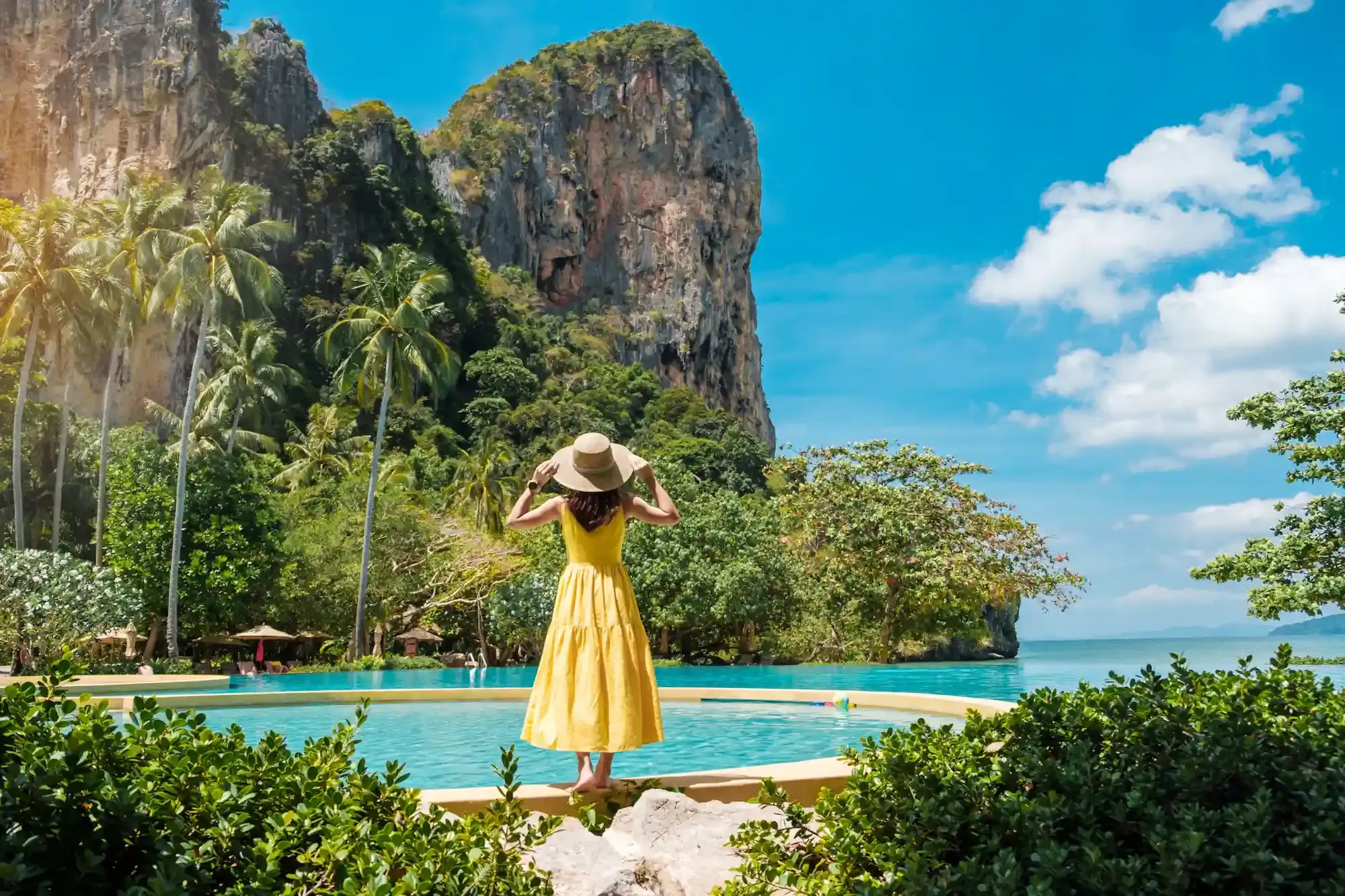
If you’re after an upscale getaway, look for beachfront resorts or private villas tucked away in more secluded areas. These spots usually offer high-end amenities like pools, spas, and stunning sea views. Ideal for honeymooners, couples, or anyone wanting a pampered stay.
Mid-Range Hotels and Guesthouses
For a balance of comfort and cost, mid-range hotels and guesthouses near popular beaches like Ao Nang are great choices. They usually provide clean, spacious rooms with pools and dining options nearby. Perfect for families or travelers looking for convenience and good value.\
Budget-Friendly Hostels and Guesthouses
Backpackers and budget travelers can find plenty of hostels, basic guesthouses, and small inns in Krabi Town and Ao Nang. Most are clean and offer shared or private rooms at affordable prices. These spots also provide easy access to local markets and nightlife.
Family-Friendly Stays
Look for family-friendly resorts or hotels with amenities like kids’ pools, playgrounds, and spacious rooms. These are often located close to key attractions, making it easy for families to relax and explore.
Practical Weather Tips for Your Krabi Trip
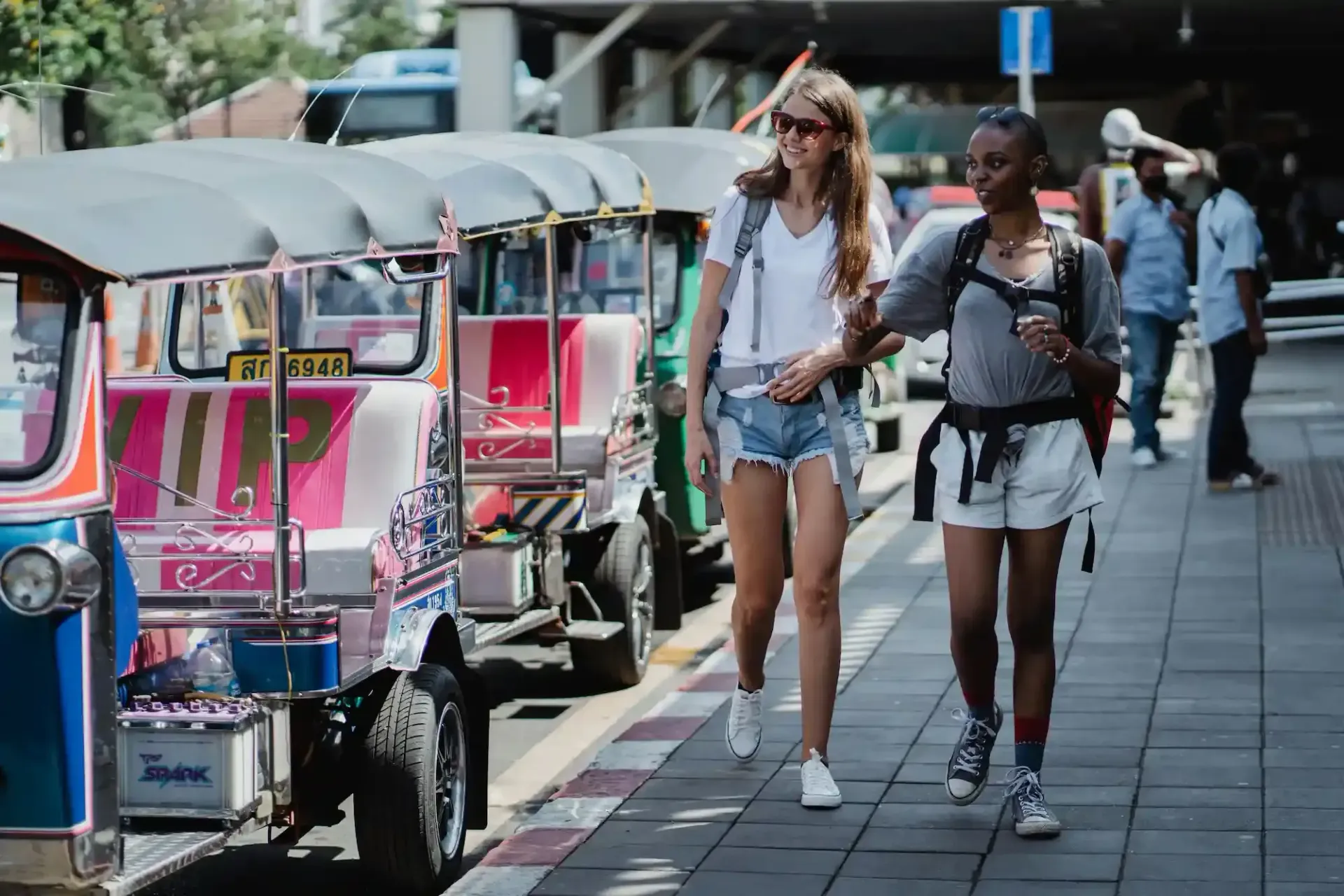
Knowing what to pack and how to plan for Krabi’s weather can make your trip smoother and more comfortable. Here are some practical tips based on the seasons.
- Dress Light and Breathable
Whether it’s dry or rainy season, light clothes like cotton T-shirts, shorts, and swimsuits are your best friends. Breathable fabrics keep you cool in the heat and humidity.
- Pack Rain Gear in Low Season
If you’re visiting between June and October, carry a lightweight rain jacket or poncho and a small travel umbrella. Quick-dry clothes are a plus since sudden showers are common.
- Sun Protection Is a Must
The sun is strong year-round. Bring sunscreen, sunglasses, and a wide-brimmed hat to avoid sunburn during outdoor activities.
- Stay Hydrated
Heat and humidity can drain you faster than you think. Always carry a refillable water bottle and drink plenty of fluids.
- Check Local Forecasts Daily
Weather can be unpredictable, especially in the rainy season. Use weather apps to track daily updates so you can adjust your plans if needed.
With these tips, you’ll be ready to enjoy Krabi’s beautiful outdoors no matter the weather.
Choose Your Perfect Time to Visit Krabi
Everyone’s ideal trip to Krabi looks different, so here’s a quick guide to help you pick the best time based on what matters most to you. Tourism revenue in Krabi is strong and growing, with expectations of reaching around 100 billion baht in 2024, reflecting the area's increasing popularity and economic importance.
- For Perfect Weather:
November to March is the safest bet for sunshine, calm seas, and comfortable temperatures.
- Budget-Friendly Travel:
If saving money is your priority, visit in the low season (June to October) when prices drop and crowds thin out.
- Avoiding Crowds:
Shoulder season (April and May) offers fewer tourists, but be ready for hotter weather.
- Adventure and Activities:
Peak season is best for rock climbing, snorkeling, and island hopping with ideal conditions.
- Cultural Experience:
Time your trip around festivals like Loy Krathong in November for a richer cultural touch.
Whichever season you choose, booking early and planning flexible activities will help you get the most out of your Krabi adventure.
If Krabi is calling your name, Love Nature Krabi Travel and Tours can help craft a trip that matches your style and interests. From tailored island tours to adventure activities, their local expertise ensures you get the most out of every moment in this stunning part of Thailand.
Frequently Asked Questions (FAQs)
1. When is the best time to visit Krabi?
The best time to visit Krabi is from November to March during the dry season, when the weather is sunny and perfect for beach activities. April and May are hot but less crowded, while June to October brings occasional rain and lower prices.
2. What should I pack for Krabi's weather?
Light, breathable clothing is essential year-round. Bring a rain jacket or poncho if visiting during the rainy season (June to October), and always pack sunscreen, sunglasses, and a hat.
3. How do I get around Krabi Town?
Options include tuk-tuks, songthaews (shared trucks), and ride-hailing apps like Grab. Renting a scooter or car offers more freedom, and boats connect Krabi to nearby islands.
4. What are the must-see attractions in Krabi?
Highlights include Railay Beach’s limestone cliffs, the Tiger Cave Temple with its panoramic views, the Emerald Pool, and nearby islands like Koh Phi Phi. Don’t miss the bustling night markets for local food and crafts.
5. Are Krabi’s beaches safe for swimming?
Yes, most beaches are safe, but always watch for warning flags and local advice. Some areas have strong currents or jellyfish during certain seasons, so it’s best to swim in designated safe zones.
